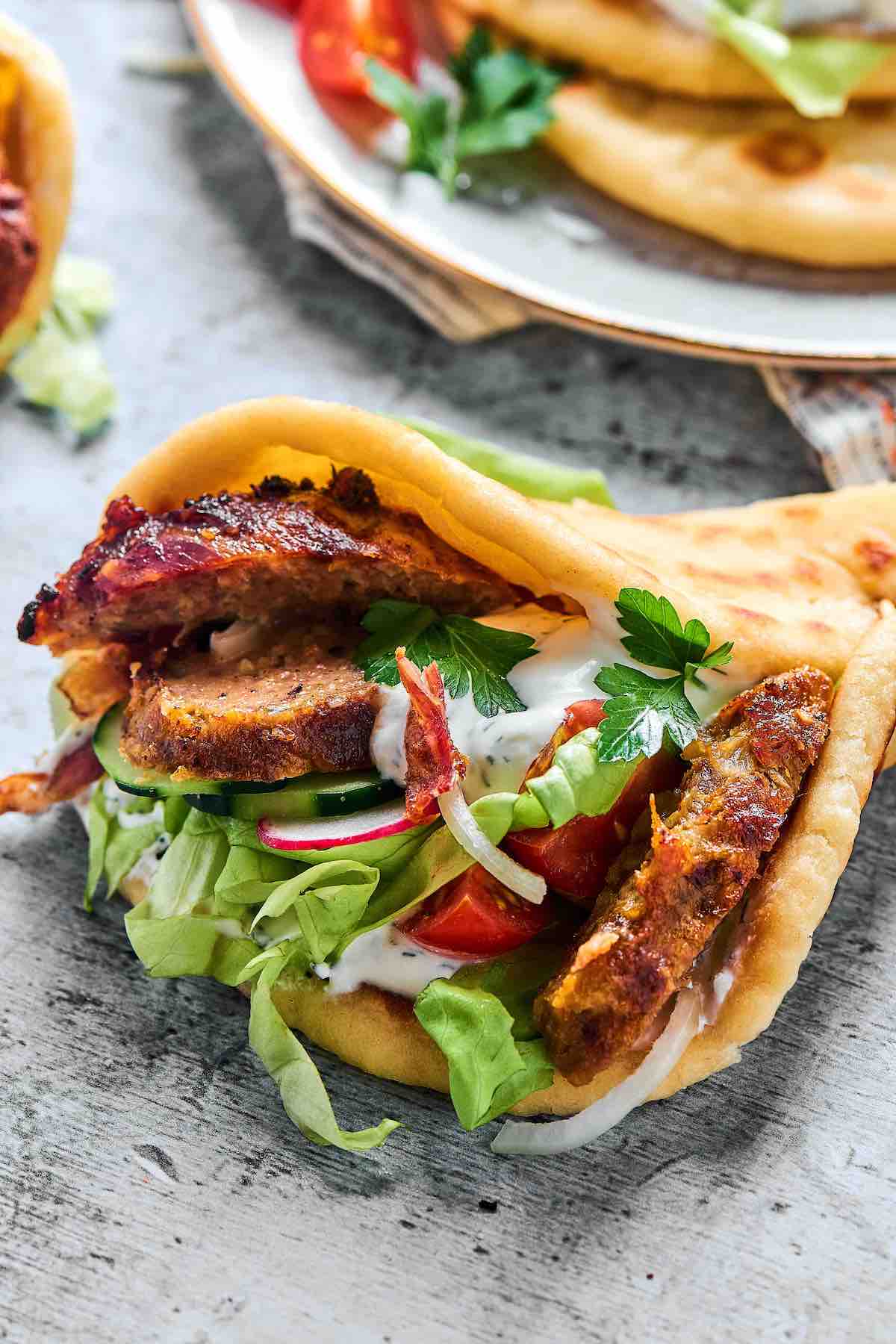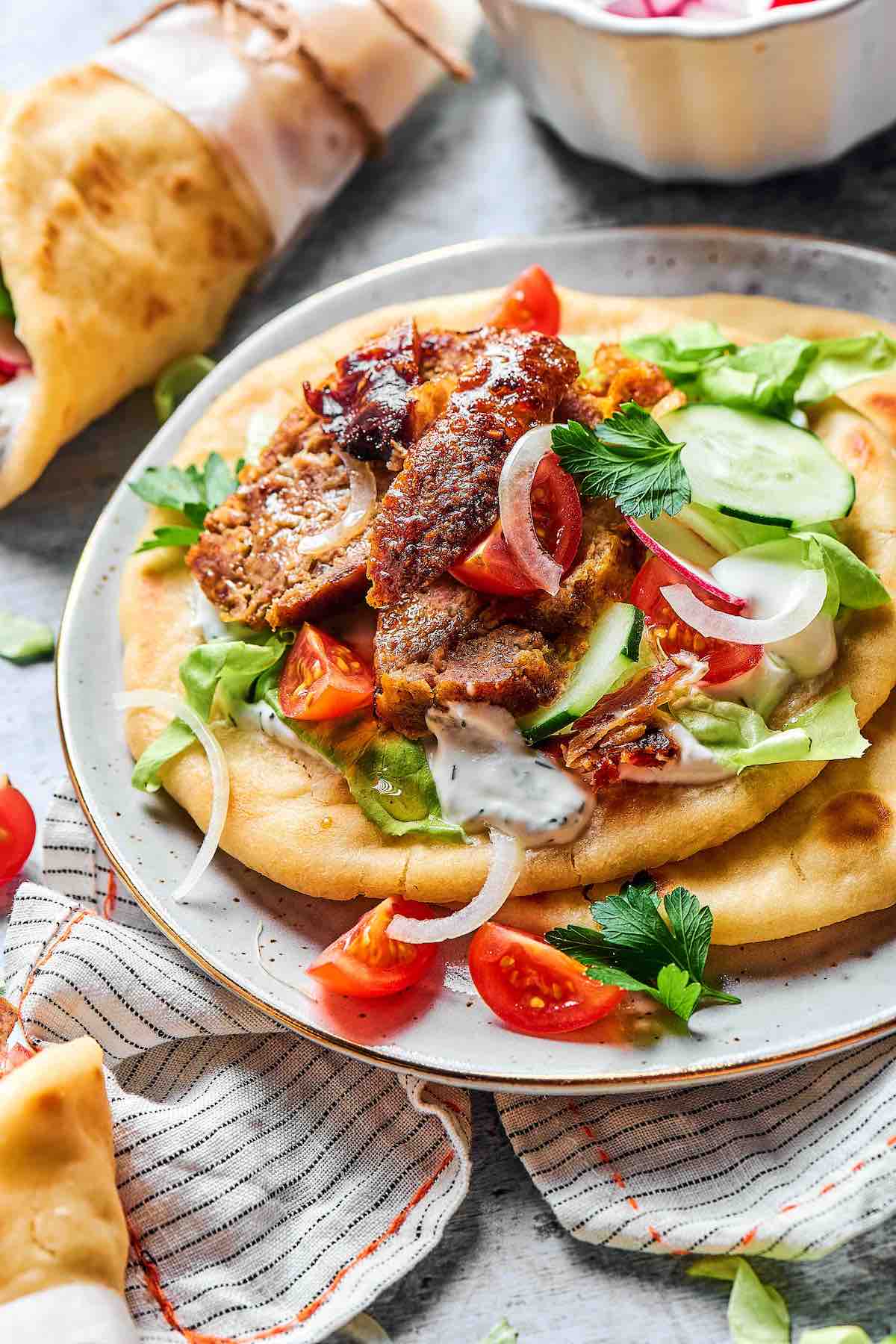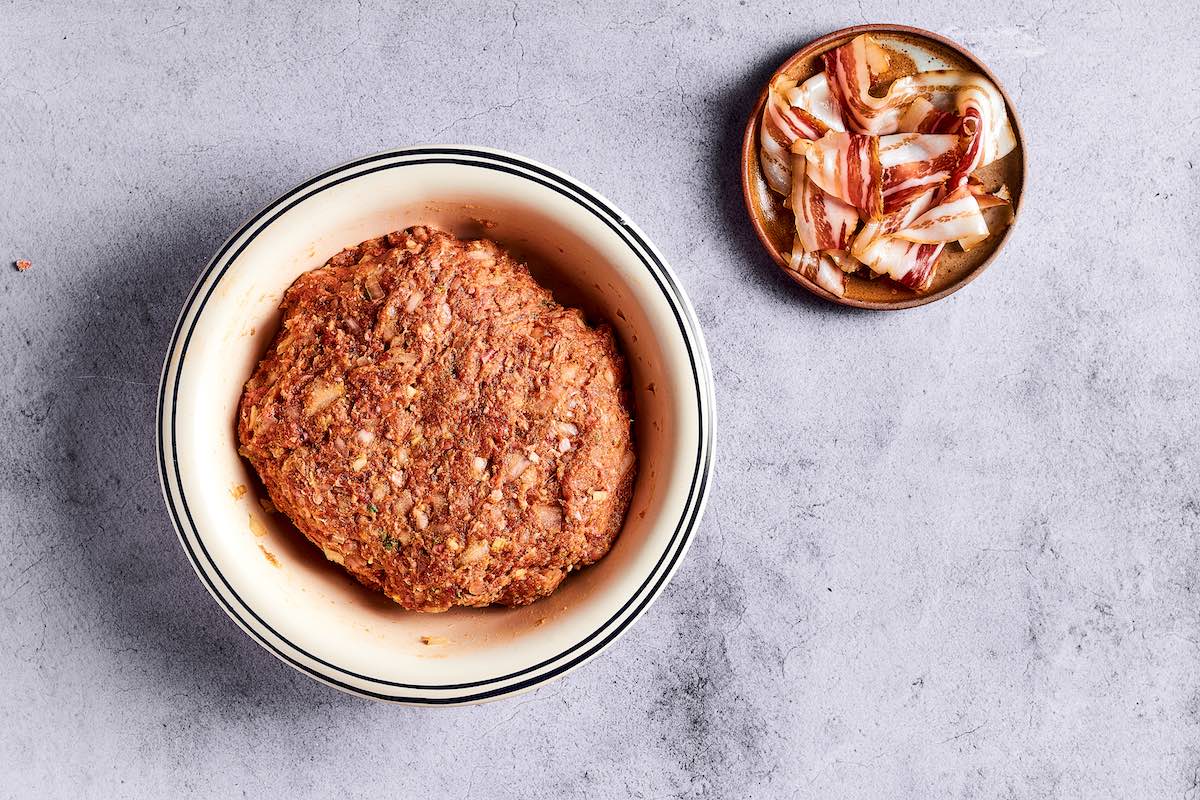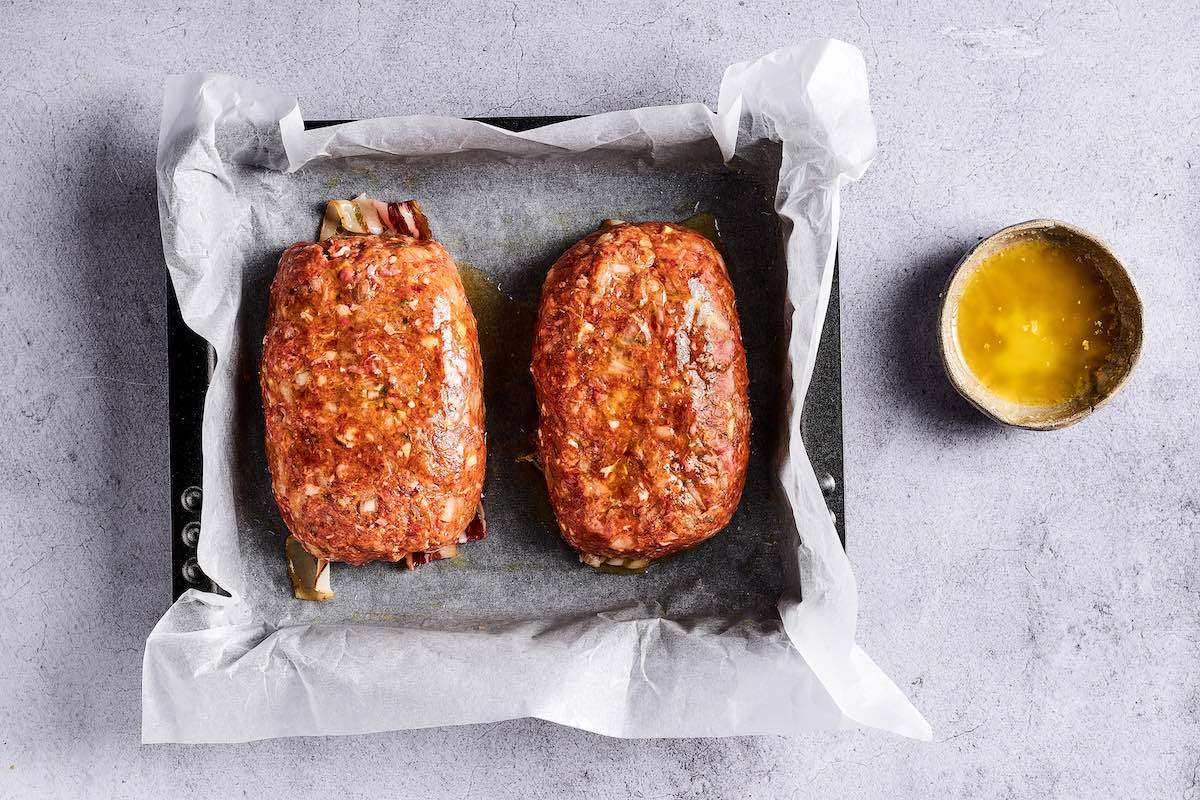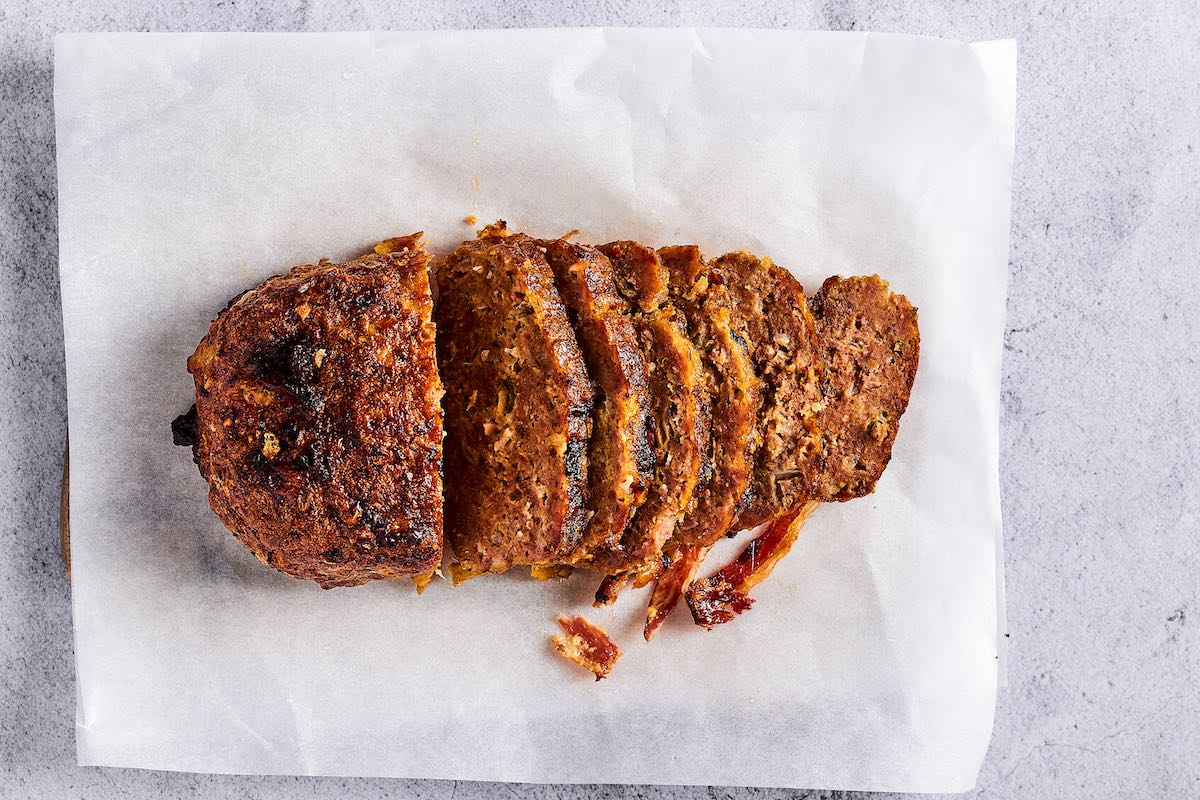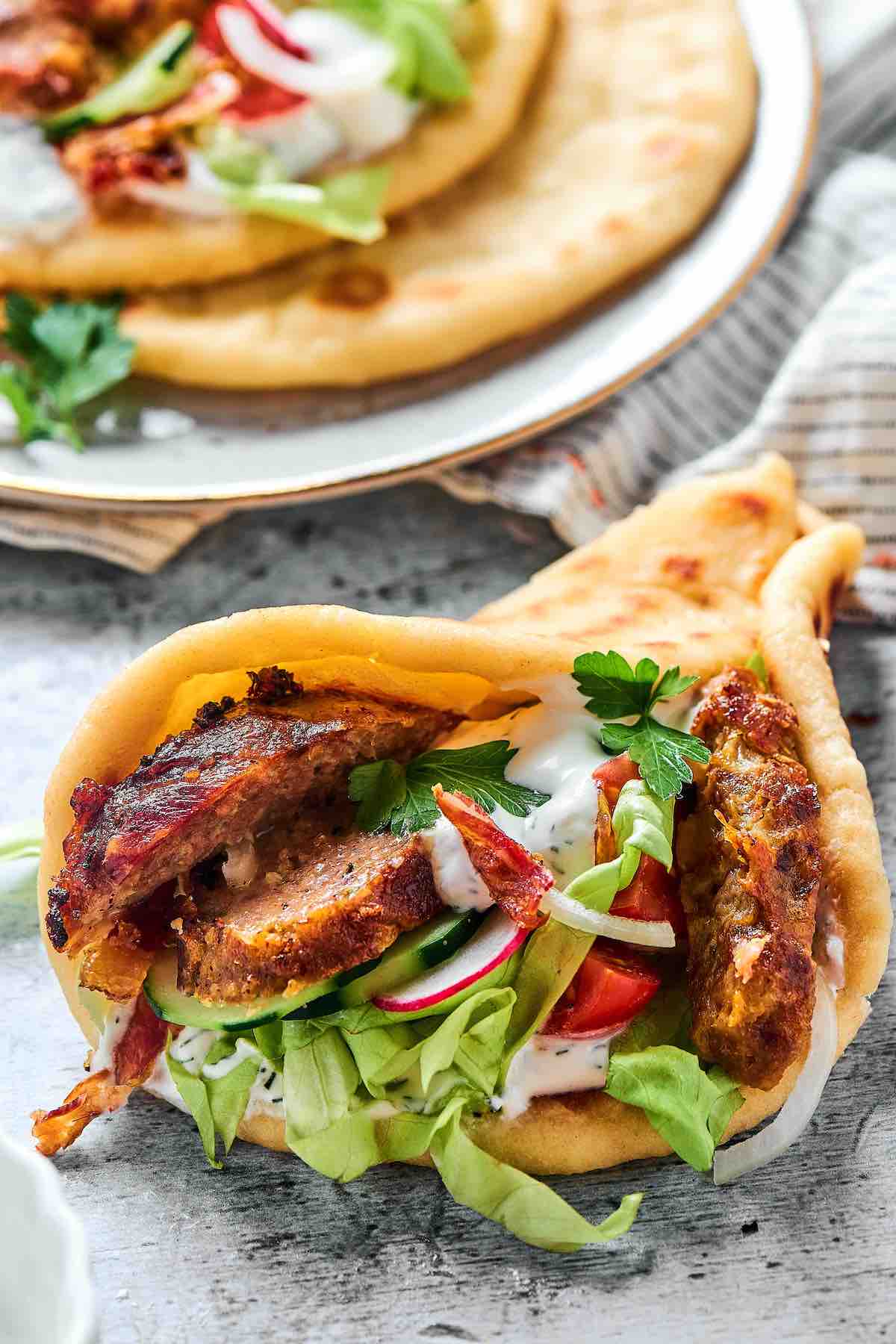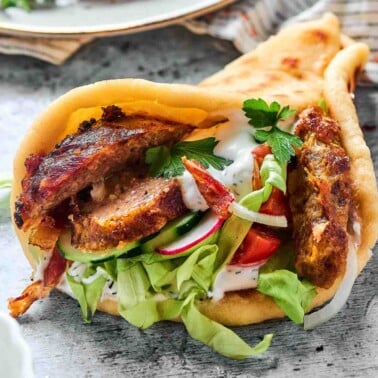Love lamb recipes? Try my boneless leg of lamb, air fryer lamb chops, and lamb ragu. Coming from a half-European background, this homemade gyro recipe was a staple in my household. My mom used to do one better and make her own with her special seasoning mix. She’s shared this recipe with me now, and let me say—it tastes better than anything you can buy!
What is gyro meat?
Gyro meat is seasoned ground lamb traditionally cooked on a long, vertical rotisserie for several hours on very low heat. The gyro slices are stuffed into fresh pita, and it is one of the most popular takeout options worldwide. Now, while authentic Greek gyros usually require a rotisserie skewer to make them, my version skips that process and cooks them in the oven! Here are some reasons why I LOVE this recipe:
Quick and easy. This recipe may look difficult to make, but it is easy and requires very little hands-on time. Oh, and you don’t need a rotisserie, either. Healthier. Sure, gyros from a restaurant or food stand are delicious, but you never know what goes into them. This homemade version uses healthier and cleaner ingredients and tastes even better! Versatile. Don’t just use it to make gyros sandwiches; it works well in salads, wraps, and Mediterranean bowls.
Ingredients needed
No hard-to-find or specialty ingredients are needed. You’ll find everything at your local grocery store (or in your spice rack!). Here is what you’ll need:
Ground lamb. While some versions call for ground beef, ground lamb is more authentic. It’s also naturally juicier and flavorful. Onion and garlic. Must have ingredients for traditional gyro meat. Seasonings. My mom’s secret spice mix features oregano, marjoram, rosemary, and thyme. Please do not swap things out or change these up; you need these four! Kosher salt and black pepper. To taste. Gyros sandwich must-haves. Warm pita bread, tomatoes, Tzatziki sauce(or a garlic yogurt sauce), and a sprinkling of feta cheese.
How to make gyro meat
I’ve included step-by-step photos below to make this recipe easy to follow at home. For the full printable recipe instructions and ingredient quantities, scroll to the recipe card at the bottom of this post. Step 1- Make the meat mix: Add all the ingredients to a large mixing bowl. Using your hands, mix everything together. Step 2- Process the mixture: Add the meat mixture to a food processor for about one minute. Step 3- Shape: Transfer to a parchment paper-lined pan and press gently to remove any trapped air. Form 1-2 loaf shapes, around 4-inches high. Step 4- Bake and slice: Bake the gyros for 35-40 minutes or until no longer pink. Cool, slice, and serve.
Recipe tips and variations
Choose good quality spices for the seasonings instead of generic grocery brands. Trust me, it makes all the difference in flavor. Avoid over-processing the meat mixture, as this can dry out the meat and also make it rubbery once cooked. Just mix everything until just combined. Never use lean or extra lean meat for gyros. The fattier cuts are essential for juicy and flavorful meat. My mom’s rule of thumb is that it the bread you serve this in should be soggy by the end (in a good way!). Avoid overbaking the meat by using an instant-read thermometer to check its doneness. It is ready to be enjoyed once the internal temperature of the meat is 165F. While serving this in a pita is the more common way to enjoy it, my family loves to make gyro bowls by serving it over some rice or bulgar and fresh vegetables.
Storage instructions
To store: Keep in an airtight container and store in the fridge for 2-3 days. To freeze: Place the cooked and cooled gyros in a shallow container and store it in the freezer for 2-3 months. Reheating: Thaw in the refrigerator a night before reheating. Use a fry pan or oven to reheat before serving.
More delicious ways to use lamb
Lamb meatballs– A flavorful and delicious alternative to ground beef. Lamb burgers– Perfectly juicy and work with a grill pan or charcoal grill. Lamb lollipop– These make the perfect meaty appetizer. Lamb ribs– Fall-off-the-bone and seriously addictive.
Originally published December 2022, updated and republished March 2024
